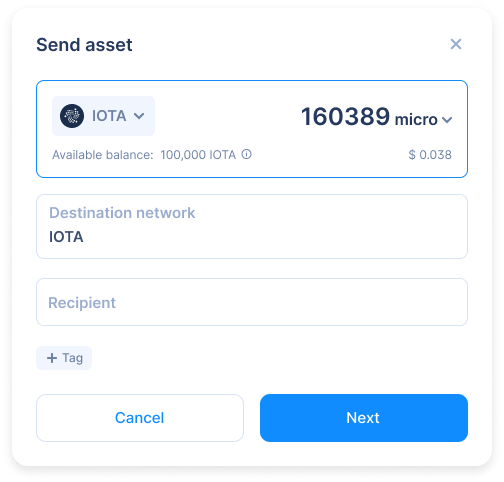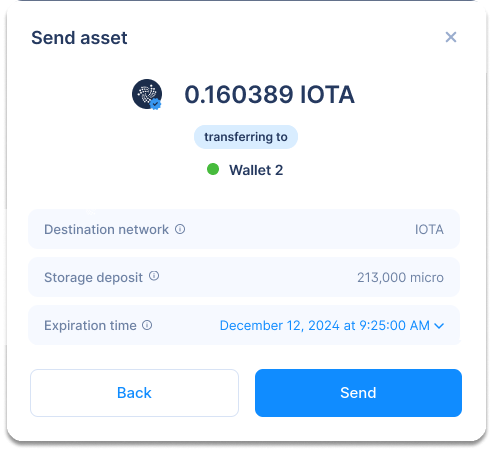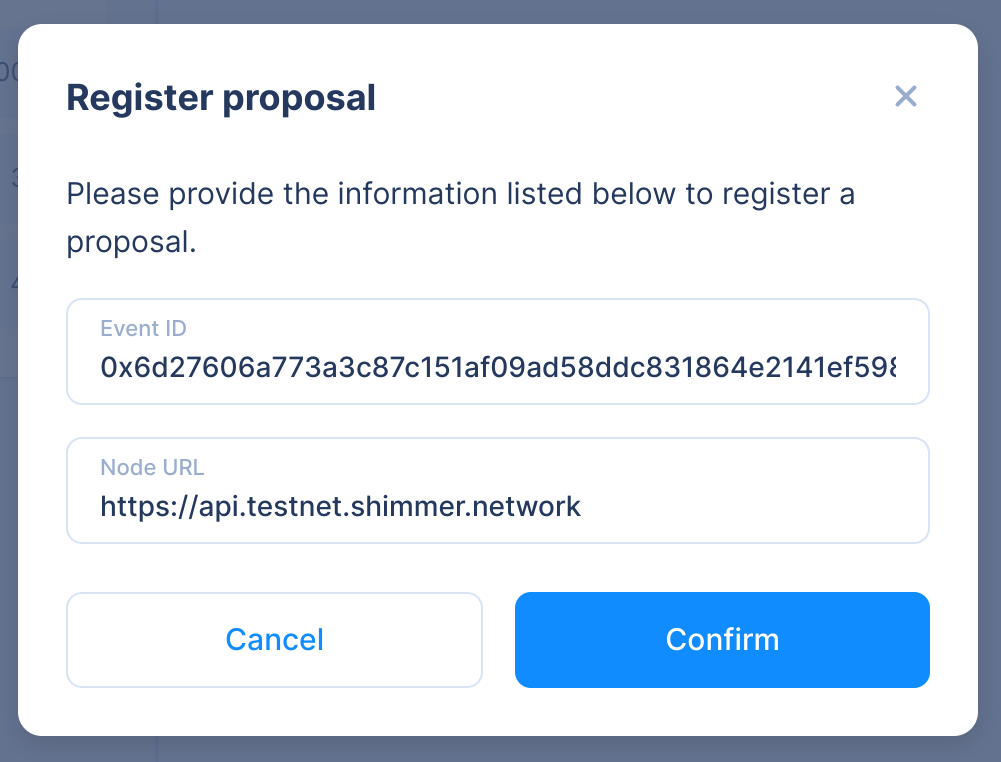#
Deep Links
Deep links are special URLs that, when navigated to, open applications rather than a website. In our case we are interested in the user experiences that they enable between websites, applications, platforms, etc. by providing more interoperability.
Firefly has its own deep link scheme, exposing (limited) functionality that is required in some type of user flow. A trivial example would be a user who buys native tokens on Soonaverse and must make a payment transaction to execute the buy order. Clicking on a deep link embedded inside the Soonaverse platform triggers Firefly to open and auto-fill the transaction data as necessary, making it a simple confirm and click job for the user.
CAUTION
Firefly will NEVER automatically execute actions initiated by a deep link; they should ALWAYS require manual confirmation on behalf of the user.
#
Scheme
Our system incorporates two specific deeplink schemes—namely IOTA and SHIMMER. Breaking down the Firefly deep link scheme reveals the following simple syntax:
IOTA
iota[-<stage>]://<context>/<operation>[?param=<param>]Shimmer
firefly[-<stage>]://<context>/<operation>[?param=<param>]The parameters are as follows:
stage- indicates a specific stage of the app to target, options are:alpha- the first available version of Firefly containing brand new featuresbeta- the next available version of Firefly containing new but slightly tested features
context- the part of Firefly that contains the operation, options are:wallet- managing coins and tokenscollectibles- managing NFTsgovernance- managing voting events and proposals
operation- an operation within a specific context (see below for more detail)param- query parameter(s) relevant for the specified operation
To target the production version simply don't specify any stages, example for Shimmer:
firefly://This prefix is specifically meant for the production version of Firefly. You don't need to add anything else after firefly://
#
Contexts
#
Wallet
#
Send Form
This operation brings the user to the send form popup:

The deep link structure is as follows:
firefly://wallet/sendForm?address=<address>&amount=<amount>[&unit=<unit>][&assetId=<assetId>][&metadata=<metadata>][&tag=<tag>]The following parameters are required:
address- the recipient's address where the funds will be sent to- MUST be a Bech32 address; considering support for other address types in the future
amount- the amount of tokens to send in the transaction- MAY contain a decimal so long as it makes sense given the value of the
unitparam (see below)
- MAY contain a decimal so long as it makes sense given the value of the
The following parameters are optional:
unit- a specified denomination of the token to use, if applicable (default for IOTA isMi, SMR isSMR)assetId- the identifier of the asset to send, e.g.4218(IOTA),4219(SMR), or a native token ID (default is base token of the network, i.e. IOTA or SMR)metadata- a string of text to embed as metadata in the transactiontag- a string to tag the transaction for indexing purposes
Example:
Source:
firefly://wallet/sendForm?address=iota1qrhacyfwlcnzkvzteumekfkrrwks98mpdm37cj4xx3drvmjvnep6xqgyzyx&amount=10&unit=Gi
#
Send Confirmation
This operation brings the user to the send confirmation popup:

The deep link structure is as follows:
firefly://wallet/sendConfirmation?address=<address>&amount=<amount>[&unit=<unit>][&assetId=<assetId>][&metadata=<metadata>][&tag=<tag>][&giftStorageDeposit=<true|false>][&disableToggleGift=<true|false>][&disableChangeExpiration=<true|false>][&surplus=<surplus>][&expiration=<expiration>]The following parameters are required:
address- the recipient's address where the funds will be sent to- MUST be a Bech32 address; considering support for other address types in the future
amount- the amount of tokens to send in the transaction- MAY contain a decimal so long as it makes sense given the value of the
unitparam (see below)
- MAY contain a decimal so long as it makes sense given the value of the
The following parameters are optional:
unit- a specified denomination of the token to use, if applicable (default for IOTA ismicro, SMR isglow)assetId- the identifier of the asset to send, e.g.4218(IOTA),4219(SMR), or a native token ID (default is base token of the network, i.e. IOTA or SMR)metadata- a string of text to embed as metadata in the transactiontag- a string to tag the transaction for indexing purposesgiftStorageDeposit- gifts the tokens used in funding the storage deposit for a transactiondisableToggleGift- prevents the user from being able to toggle the option to gift the storage depositdisableChangeExpiration- prevents the user from being able to change the expiration time of the transactionsurplus- send additional amounts of the base token when transferring native tokensexpiration- the expiration time of the transaction, e.g.1w,2d,5hor10m. Also accepts a UNIX timestamp in milliseconds.
Example:
Source:
firefly://wallet/sendConfirmation?address=iota1qrhacyfwlcnzkvzteumekfkrrwks98mpdm37cj4xx3drvmjvnep6xqgyzyx&amount=10&unit=Gi&giftStorageDeposit=true&disableToggleGift=true&surplus=1&metadata=Take%20my%20money&expiration=1h
#
Collectibles
Coming 🔜
#
Governance
#
Add Proposal
This operation brings the user to the add proposal popup:

The deep link structure is as follows:
firefly://governance/addProposal?eventId=<eventId>&nodeUrl=<nodeUrl>The following parameters are required:
eventId- the event ID of the proposal's corresponding participation event in the network
The following parameter(s) are optional:
nodeUrl- the specific node that is tracking the proposal's corresponding participation event
INFO
If the node requires authentication (e.g. username and password, JWT), the user will be required to manually enter the information.
Example:
Source:
firefly://governance/addProposal?eventId=0x6d27606a773a3c87c151af09ad58ddc831864e2141ef598075dc24be5668ca7f7f&nodeUrl=https://api.testnet.shimmer.network